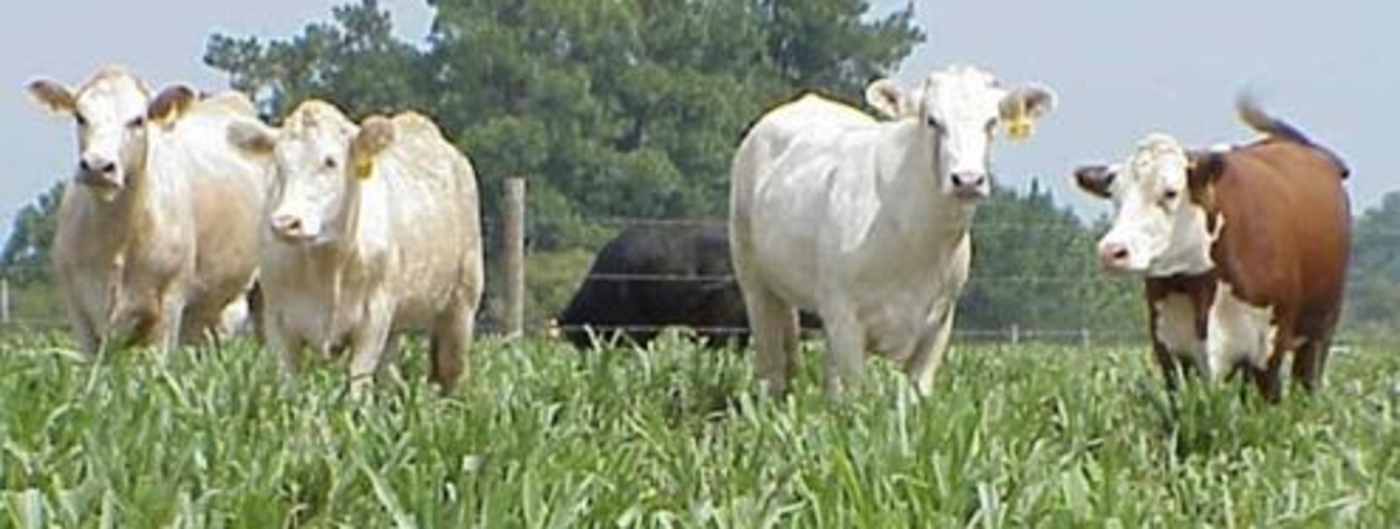Pasture is the primary source of forage for grazing dairies. Plus, for organic dairies, the National Organic Program livestock production regulations require a minimum of 120 grazing days per animal.
In the northern United States, producers typically meet this requirement with a May to September grazing season. Profitability depends on pastures that provide a uniform, season-long supply of high-quality forage.
However, in the northern United States, seasonal variation in temperature and precipitation creates a challenge, as predominant forage plants undergo a summer slump in production. These plants include perennial grasses such as Kentucky bluegrass and smooth bromegrass, and legumes such as white clover.
Solution: Diversifying grasses
To create a more uniform and extended forage supply, research studies have recommended diversifying pasture systems to include warm-season species in the summer.
One approach to increasing diversity in a farm’s forage base is to combine annual and perennial crops in separate fields.
For example, a producer in the northern United States would use cool-season grasses and legumes for forage in the spring and early fall, and warm-season annuals like teff and sudangrass for forage in summer. Grazing systems using different approaches to achieve diversity require biological, environmental and economic analysis.
Livestock producers should consider summer annuals because they’re very drought-tolerant and can fill a gap in feed when other species experience the summer slump. They’re great emergency forages during dry weather and are multipurpose, so you can use them for grazing, silage or baling.
Research: Summer annual grass
To better understand options for extending forage supply, our research team planted two summer annuals for grazing for the first time at the University of Minnesota West Central Research and Outreach Center dairy pastures in Morris. We used brown midrib (BMR) sorghum-sudangrass and teff grass seeded with a drill on May 28, 2013.
BMR sorghum-sudangrass has increased in popularity due to the BMR gene and its high neutral detergent fiber (NDF) digestibility, which is 5 to 10 percent higher than regular sorghum-sudangrass.
Plants have thick stems and are very leafy. Sorghum-sudangrass has moderate regrowth potential. However, you shouldn’t graze or cut for forage until the plants are at least 18 inches tall to reduce prussic acid concentration. The ideal height for forage is 18 to 36 inches tall.
When grazing sorghum-sudangrass, move animals so they leave 6 to 8 inches of stubble. However, they might waste 20 to 30 percent of the forage through grazing.
Lastly, sorghums and sudangrasses are luxury consumers of potassium and shouldn’t be used for dry cow forages.
We seeded our fields and pastures at a seeding rate of 20 pounds per acre.
Teff grass is native to Northern Africa. Teff is drought-tolerant and can be seeded into many different soil types. With this grass, you’ll have high yield with competitive forage quality, and will have rapid growth for 9 to 12 weeks.
The seed is very, very small. We seeded our pastures at 8 pounds per acre.
Results: Forage qualities
Table 1 has averages for forage quality of BMR sorghum-sudangrass, teff grass and cool-season grasses during 2013. The cool-season species consist of mixtures of smooth bromegrass, orchardgrass, red and white clover and alfalfa.
Findings
- The dry matter of the sorghum-sudangrass was low because the cattle grazed the fresh forage in the early vegetative state.
- The summer annuals weren’t as high in crude protein as the cool-season grasses. However, with lower crude proteins, we probably improved nitrogen utilization of the milking herd.
- The acid detergent fiber (ADF) values of the grasses were very similar and are within the range of low 30s to mid-50s.
- All grass species were high in digestibility. The neutral detergent fiber (NDF) levels were higher for the summer annual grasses compared to cool-season species.
- The total tract NDF digestibility (TTNDFD) was lowest for the teff grass. TTNDFD is a measure of how much fiber is digestible, how fast the fiber digests, and how long a cow holds the fiber in the digestive system.
- Summer annuals were similar to the cool-season grasses for sugar and non-fiber carbohydrates, and provided similar net energy for lactation and milk per ton as the cool-season grasses.
The values in Table 1 are the results of a 2013 study at the University of Minnesota West Central Research and Outreach Center dairy pastures.
Table 1: Forage quality of BMR sorghum-sudangrass, teff grass and cool-season grasses
| Description | BMR sorghum-sudangrass | Teff grass | Cool-season grasses |
|---|---|---|---|
| Dry matter | 17.0% | 29.0% | 27.0% |
| Crude protein | 12.9% | 13.7% | 19.9% |
| Acid detergent fiber (ADF) | 37.6% | 40.2% | 35.5% |
| Neutral detergent fiber (NDF) | 58.1% | 61.8% | 52.7% |
| TTNDFD | 53.9% | 46.4% | 52.5% |
| Lignin | 5.4% | 3.6% | 5.7% |
| Sugar | 6.3% | 5.8% | 7.3% |
| Non-fiber carbohydrates (NFC) | 18.8% | 14.1% | 18.1% |
| Net energy for lactation | 0.56 megacalories (Mcal) | 0.53 Mcal | 0.59 Mcal |
| Milk per ton | 2,476 pounds of milk per ton | 2,028 pounds of milk per ton | 2,450 pounds of milk per ton |
Remember, sorghum-sudangrass and teff grass aren’t replacements for cool-season forages, but should be added to a forage program to complement the cool-season grasses. If there’s a drought or dry weather, these two forages may help you avoid buying expensive hay during a drought.
Reviewed in 2023


